What is Plisse Fabric? Plisse fabric is derived from the term “fold” in French; plissé, also known as crinkle crêpe, referred initially to cloth that had been weaved or collected into pleats. Today, it’s a thin cloth with ridges or stripes that create a crinkled, puckered appearance.
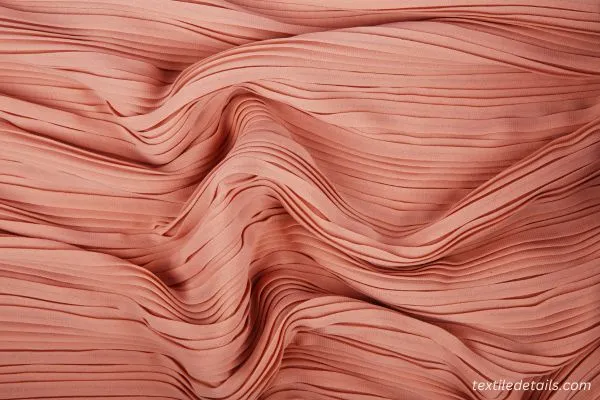
Table of Contents
Overview:
The plissé is one of the most intriguing secrets in the history of fashion because of the crease, which, by definition, provides flexibility and suppleness to the fabric and the wearer. And the plissé has always had a classic and sensual allure. It is created by a lengthy hand procedure in which the cloth is folded back on itself. This technique was first discovered in Ancient Egypt when only the higher classes used linen garments with pleats.
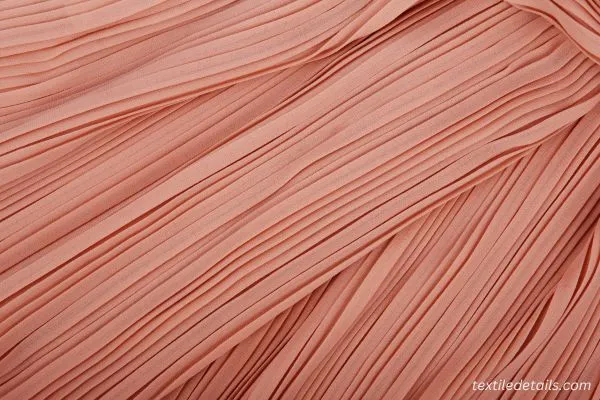
What makes Plisse fabrics different from other fabrics?
With a plissé finish, almost every piece of clothing may appear more textured. A plissé finish offers your garments a more textured appearance, which might give your ensemble fun and exciting touch. Plisse fabric is distinctive because it is simpler and easier to use than its competitors.
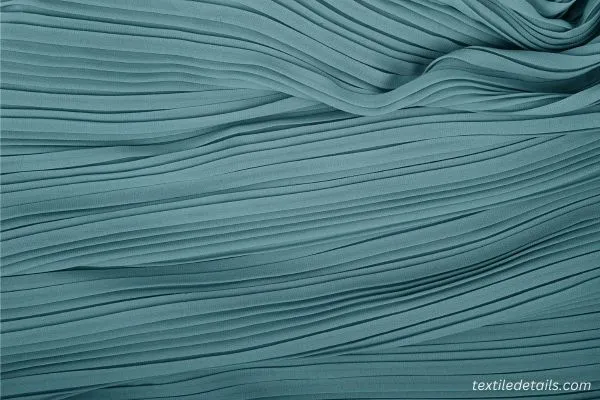
What is Plisse fabric made of?
Plisse fabric is one kind of cotton chemically treated to give it a puckered or crinkled appearance.
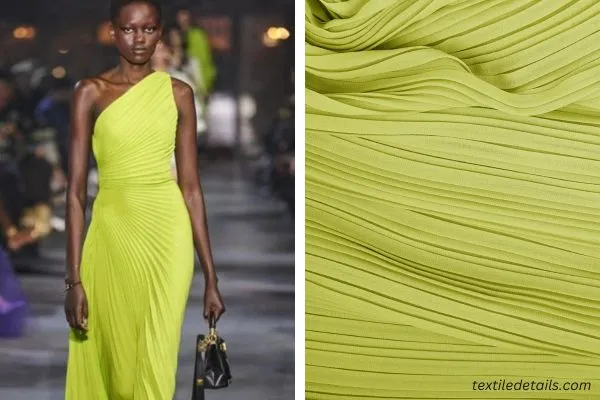
A piece of thin, plain-weave fabric with a puckered striped appearance that generally runs in the warp direction. It can be composed of cotton, rayon, or acetate. The crinkled appearance is produced by applying a caustic soda solution to the fabric and shrinks in the regions where it is used. Plissé resembles seersucker in look. Dresses, shirting, pajamas, and bedspreads are examples of final products.
Properties of Plisse fabrics:
- It is made of very breathable material.
- It is light and delicate.
- It has a refined, silky feel.
- Comfortable to wear.
| Fabric name | Lintreated cotton |
| Polymer system | 70% crystalline |
| Luster | No pronounced luster |
| Strength | Relatively strong |
| Tenacity | 4.0 |
| Moisture Regain | 7.5 |
| Specific gravity | 1.52 |
Manufacturing process:
Chemical finishing, a procedure that involves applying chemicals to cotton textiles, is the primary method used to create Plisse fabric.
The most fundamental technique for making Plisse is this finishing. It involves making designs out of chemicals, particularly caustic soda. The materials shrink when the caustic soda is sprayed, resulting in folded patterns on the cloth.
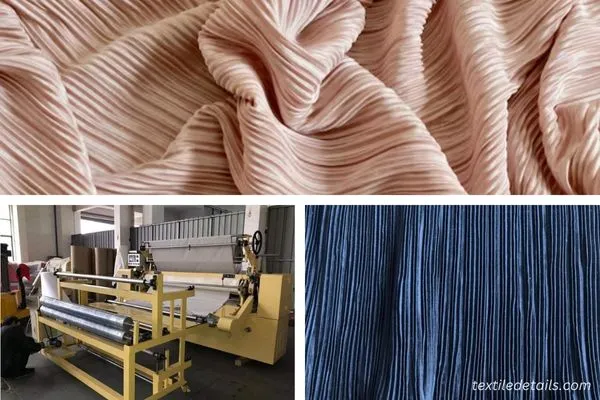
Cotton cloth is the best material for this technique. Stitching, heat-pressing, and hand folding are additional techniques for creating folds in cotton.
Types of Plisse fabric:
- Accordion
- Cartridge
- Circular
- Curtain
- Draped
- Fluted
- Fortuny
Plisse Fabric Characteristics
Effects of Alkalis: These fibers can withstand alkalis and are largely unaffected by routine washing. The absence of attraction between cotton polymers and alkalis causes resistance.
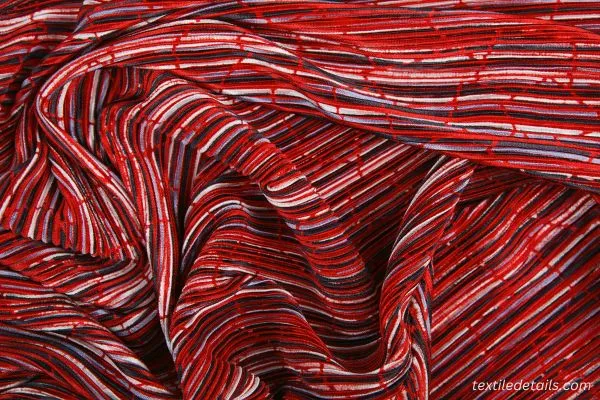
Effect of Acids: Acids weaken and obliterate cotton fibers. The glycosidic oxygen atom that joins the two glucose units to create the cellobiose unit is where acids hydrolyze the cotton polymer. The cotton polymer will hydrolyze more quickly because mineral acids are more robust than organic acids.
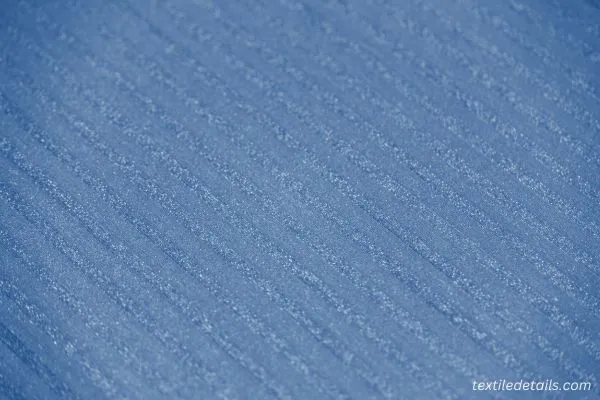
Effect of Bleaches: Sodium hypochlorite and sodium perborate are the two bleaches that are most frequently used on cotton textiles. Due to the oxygen, they release, they are oxidizing bleaches and bleach.

Effect of Sunlight and Weather: Infrared rays give thermal energy necessary for degrading cotton polymers under the pressure of ambient oxygen, moisture, and air contaminants, whereas ultraviolet rays of sunlight offer photochemical energy. Through a variety of hydrolysis processes, polymers are broken down. A minor darkening of the fibers signals the start of deterioration. The breakdown of the dye molecules in the fiber’s polymer structure contributes to the fading of colored cotton textiles.

Color Fastness: Cotton is simple to print and dye. Cotton may be colored with shades from the azoic, direct, reactive, sulfur, and vat dye families. In addition, any polar dye molecule may easily attract to the polar polymer system. As a result, cotton’s polymer structure will absorb color molecules that may spread in water.

Mildew: Fungi cause harm to cotton. Mold may flourish under conditions of heat and moisture. A substance produced by the fungus can convert cellulose to glucose. The sugar molecules serve as food for the fungus. Mildew cannot grow on cotton that has been treated with acrylonitrile.
Insects: Cotton is not altered by moths or bugs. Silverfish will consume cotton cellulose, especially if it is highly starched.
Application of Plisse fabrics:
Plisse fabrics are used to create elaborate patterns mainly in the apparel and garment sector. Some couture establishments have produced even all-plisse collections. Elegant curtains and drapes (or draperies) can be made with cloth for home décor. Pleats may be used in various quilt patterns and other types of patchwork, as quilters have learned.
There are some prominent applications of Plisse fabrics are:
- Accordion skirts: The long accordion skirt is one of the most popular items with the distinctive pleating technique. Your silhouette will appear slimmer thanks to vertical pleats. Wear the dress with a tight cardigan, a sequin tank, or an off-the-shoulder top.

- Button-up blouses: Pleated long-sleeve blouses may bring flair to an everyday dress or elegance to professional attire. Slip the blouse into a pair of trousers, jeans, or leggings to lengthen your body.
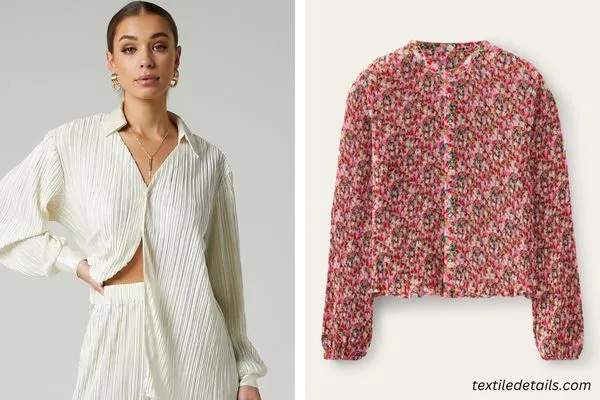
- Cardigans: Warm clothing options for autumn or cold spring day include wool-knit plissé cardigans. You may use plissé cardigans with many different outfit combinations, such as jeans, a T-shirt, a blouse, and a pencil skirt for a business dress. In addition, they are available in many sleeve styles, such as batwing, balloon, or slit.
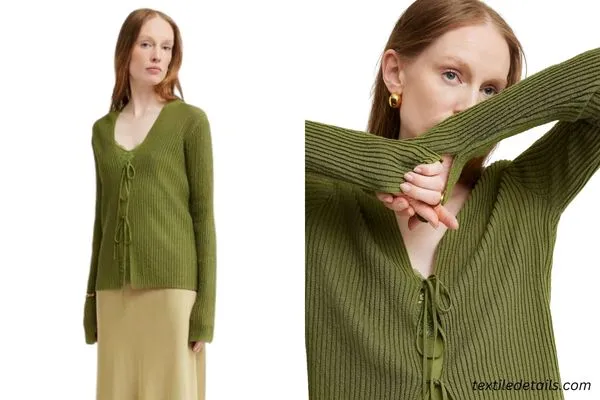
- T-shirts: Plisse T-shirts have a loose fit and maybe a stylish yet practical addition to your wardrobe. They look great with denim shorts and sandals for the summer or a big necklace and dark denim trousers for a coffee date.
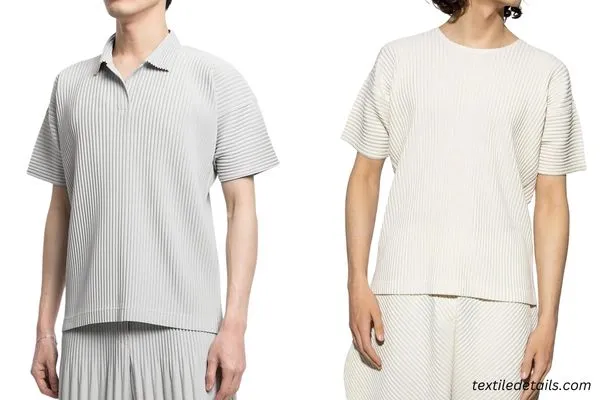
What is Plisse Fabric?
It is a crinkle cloth. It is thin, delicate, refined, and easy to use as an outfit with a distinctive appearance. The ridges or stripes create a crinkled, puckered appearance that makes the Plisse fabric different from any other fabric.
Is a Plisse fabric wear-friendly?
Though Plisse fabric has a highly textured exterior, it has a silky appearance, which is wear-friendly and comfortable. The Plisse fabric is so delicate, even if it is breathable. The refined appearance of Plisse material is way better to wear comfortably than its competitors.
How to take proper care of Plisse fabric?
To take proper care of Plisse fabric, try not to wring or twist your Plisse fabric consisting of the outfit.
While washing the price fabric outfit, gently handle the stuff. While using the washing machine, try to use the gentle cycle.
Is Plisse fabric summer adaptable?
The delicate and thin appearance makes the fabric much more comfortable for people using Plisse fabric outfits for warm weather, and even it is mainly used as a summer wedding gown. Regardless, please, the material is used primarily in summer outfits.
Learn About: Which Fabric is More Comfortable in Summer
Conclusion:
Plisse woven fabric is a well-liked alternative for clothing that falls into athletic wear, nightwear, and gowns since it may be puckered without compromising its level of comfort. Even when worn next to the skin, plissé cloth has a gorgeous effect.
References:
- www.businessoffashion.com/education/fashion-az/pliss%C3%A9
- www.masterclass.com/articles/plisse-explained/
- https://wear-next.com/news/what-is-plisse/
- https://knowledgetextile.wordpress.com/more/cotton-physical-chemical-properties/
- https://greennettletextiles.com/plisse-fabric/
Md Al Amin is a writer and originally from Bangladesh. He has a bachelor’s in Physics from the National University of Bangladesh. Completed Post Graduate Diploma in Garment Business (PGD-GB) from Institute of Business Administration University of Dhaka.
